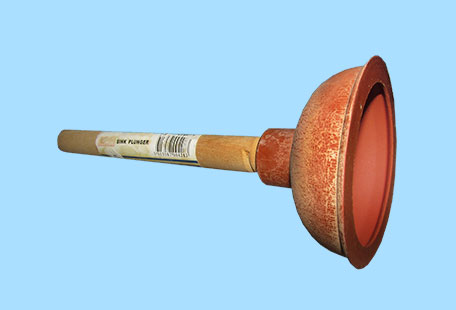Drain blockage prevention and how to clear plugholes
Here at ASL Limited, we receive a lot of questions about drains. Recently we had a phone call from someone with a blocked drain in Reading. They asked how to clean plugholes and prevent blockages. You can use many methods and techniques to clean your plugholes and keep your drains clear of blockages, so we thought we’d share our advice with you.
Use a protective screen for the plughole.
If you lead a busy life and have enough things to think about already, a protective drain screen could be just what you need. You can buy a screen (plastic or metal) very cheaply from most supermarkets or hardware stores. The screens job is to sit over your plughole and prevent any debris from going down the drain when it’s not supposed to.
Protective drains are essential for preventing blocked drains and can be used on both your bathroom and kitchen sinks, in addition to the shower drain. Protective screens do a great job of blocking hair, soap chunks, and many other items from washing down the drain and causing blockages. There is a range of plughole protectors in a variety of sizes that you can choose from. But if you want to prevent blockages and keep your plugholes clear of unwanted debris, protective screens are an important investment.
Remove hair and debris from plugholes yourself.
While there are more efficient means of keeping your plugholes clean, some people refer to clean plugholes by doing everything themselves. So, if you have a little bit of extra time, it is important to remove hair and other debris from the drain after every bath or shower to prevent build-ups and blockages. While this can be a little more time-consuming than the alternatives we have already mentioned, it is still a very effective option.
Commercial drain cleaners for small blockages.
For small clogs or blockages, a good removal method is to use commercial drain cleaners. These unblocking products help eliminate any small debris build-ups that are not washing away naturally with the water flow. It’s your choice to use chemical cleaners or prefer eco-friendly products; both are just as effective.
Use boiling water every day.
Kitchen, Teapot, Blue, Glass TileA good method for keeping your drains clear or buildups is pouring boiling water down the drain every time you use the sink. An easy solution and a great alternative to cleaning products, regularly using boiling water really works! This simple method is a great way to help wash away anything that may be collecting around the plughole or sticking in the pipes. A kettle full of hot water every day will help keep your plughole clear and prevent blocked or slow running drains.
Use tweezers for small plugholes.
Sometimes, it can be tricky, grabbing hold of pieces of hair and other debris that has become stuck around your plughole. Using tweezers is a great option, and if you want fast results, they are the ideal solution. You can use your tweezers to carefully and gently fish out any hair, soap pieces, and stuck debris that has built up around your plughole. It may seem like an odd approach to clean plugholes, but it is widely regarded as the fastest and easiest way to clear your plughole.
Use a wire coat hanger for deeper blockages.
After cleaning the plughole, many people discover that their sink, shower, or bath is still blocked. This is likely due to a blockage further down the pipes and can often be solved using a wire coat hanger. A wire coat hanger is one of the most effective ways of dealing with long strands of tangled hair.
All you have to do is straighten the wire coat hanger out and lower the end with the hook down the sink and into the drain. Using a slight twisting motion, you should be able to move the coat hanger around in the drain and hook out any hair, soap, and debris that has become blocked. This has always been a very effective method, and you should see your drains running smoothly once more.

Clear your plughole with a plunger.
Image result for PlungerIf you have a significant build-up of grime, hair, and soap in your plughole, it can be difficult to shift. When blockages are extensive, it is best to use a plunger to clear the plughole.
When plunging your plughole, it is important to create proper suction to ensure the plunger works properly. It would be best if you moved the plunger up and down to build up suction and help release any hair, grime, and debris that has become built up around the plughole. Using a plunger merely helps bring blockages to the surface so that the debris is more accessible and easy to fish out.
Baking soda vinegar solution.
If you prefer using natural drain cleaners, a baking soda and white vinegar solution is often the most effective option. Pour half a cup of bicarbonate of soda into the pipes and follow it with half a cup of vinegar. This combination should start bubbling and help clear any blockages around your plughole. After you’ve given it 30 minutes or so to work, it is important to follow the solution with boiling water to wash it completely out of your drains.
Call in the professionals.
If your plughole is so blocked that you can’t unblock it yourself, call our team at ASL Limited today, and we can unblock your drains for you. Our team of drainage professionals are more than happy to help clear your drains from any blockages that are too extensive for you to be able to fix yourself.

